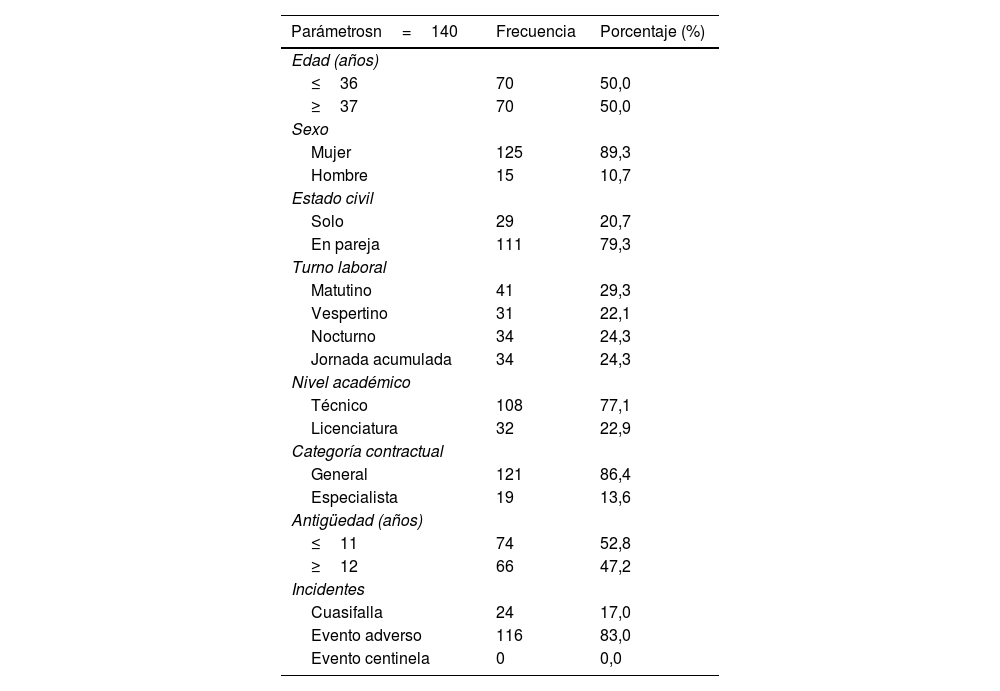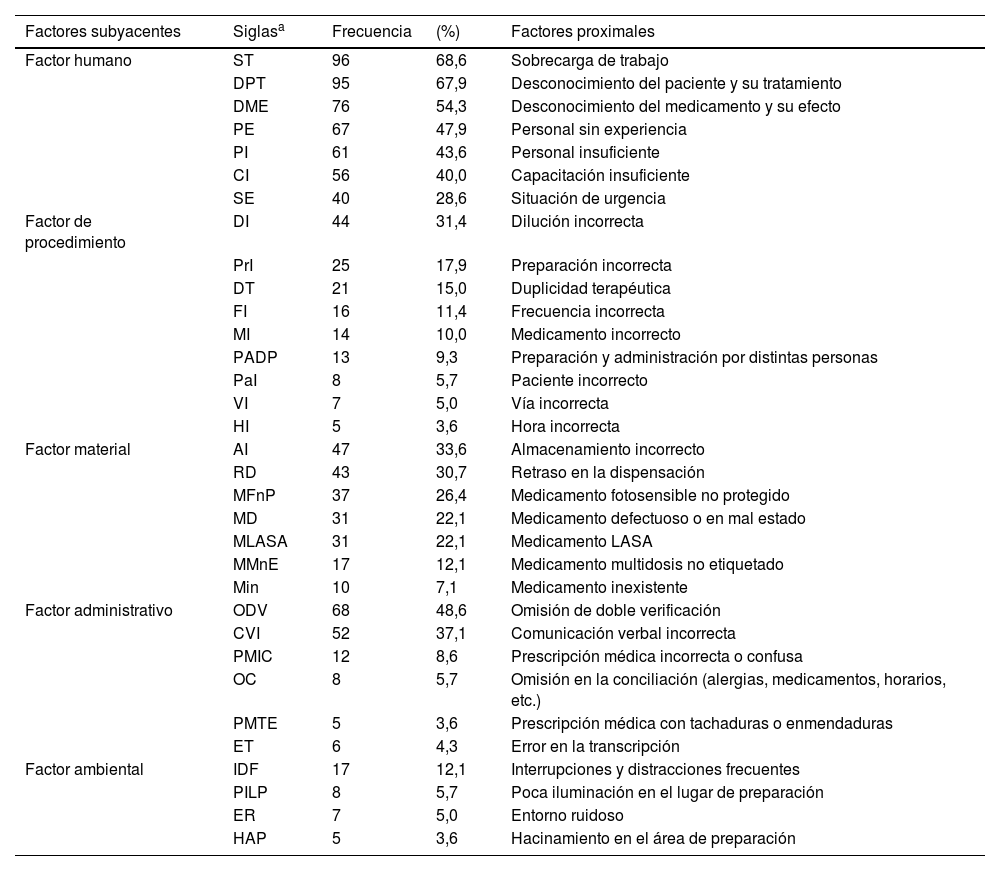Durante la administración de medicamentos pediátricos, los incidentes relacionados con la seguridad del paciente como evento centinela, adverso o cuasifalla continúan ocurriendo.
ObjetivoIdentificar factores de riesgo asociados a eventos adversos durante la medicación de pacientes pediátricos notificados por enfermeras.
MétodosEstudio transversal, muestreo no probabilístico. De enero a octubre del 2021 fueron revisados 411 informes del Sistema Vencer II, de los cuales solamente 140 notificaron incidentes durante la medicación de pacientes pediátricos. Mediante el análisis causa raíz se investigaron 38 factores asociados a incidentes. Se utilizó estadística descriptiva e inferencial.
ResultadosDe los 411 informes revisados, el 34,0% tuvieron notificación de incidentes, lo que equivale a 140 informes; 116 (83,0%) eventos adversos y 24 (17,0%) cuasifalla, no notificaron eventos centinela. En el factor humano, 6de los 7 factores proximales tuvieron una frecuencia ≥ 40,0%. La sobrecarga de trabajo se asoció significativamente con la ocurrencia de eventos adversos OR=3,24 (IC del 95%, 1,31-7,99) (p=0,008). Contrario a lo que ha sido reportado, los medicamentos LASA (Look-Alike, Sound-Alike, por sus siglas en inglés) y la omisión de doble verificación se identificaron como protectores contra la ocurrencia de incidentes OR=0,323 (IC del 95%, 0,13-0,84) (p=0,017); OR=0,39 (IC del 95%, 0,15-0,99) (p=0,047).
ConclusionesLa sobrecarga de trabajo se identificó como factor de riesgo asociado a la ocurrencia de eventos adversos, por lo que es necesario evaluar este factor desde la medición objetiva y desde la percepción del mismo por las enfermeras. Tener un sistema documentado de notificación y respuesta a incidentes permitirá a las instituciones de salud demostrar diligencia y transparencia, lo que puede ayudar a reducir la responsabilidad legal en caso de problemas. Finalmente, la utilidad del análisis causa raíz y del diagrama de Ishikawa para identificar factores que pueden originar eventos adversos, nuevamente es respaldada, por lo que su integración en el instrumento VENCER II sería de utilidad.
During pediatric medication administration, patient safety-related incidents such as sentinel event, adverse event or quasi-failure still occur.
ObjectiveTo identify risk factors associated with adverse events during the medication of pediatric patients reported by nurses.
MethodsCross-sectional study, non-probabilistic sampling. From January to October 2021, 411 reports from the Vencer II System were reviewed, of which only 140 reported notifications of incidents during the medication of pediatric patients. Using root cause analysis 38 factors associated with adverse events were investigated. Descriptive and inferential statistics were used.
ResultsOf the 411 reports reviewed, 140 (34.0%) correspond to incidents; 116 (83.0%) to adverse events and 24 (17.0%) to quasi-failure, no sentinel events were reported. In the human factor, 6of the 7proximal factors had a frequency ≥ 40%. Work overload was significantly associated with the occurrence of adverse events; OR=3.24 (95% CI, 1.31-7.99) (P=.008). Contrary to what has been reported, LASA (Look-Alike, Sound-Alike) medications and double-check omission were identified as protective against the occurrence of incidents; OR=0.323 (95% CI, 0.13-0.84) (p=0.017); OR=0.39 (95% CI, 0.15-0.99) (P=.047).
ConclusionsWork overload was identified as a risk factor associated with the occurrence of adverse events, so it is necessary to evaluate this factor from objective medication and from the nurses’ perception of it. Having a documented incident notification and response system in place will allow healthcare institutions to demonstrate diligence and transparency. Finally, the usefulness of root cause analysis and the Ishikawa diagram to identify factors that can cause incidents is again supported, so their integration into the VENCER II instrument would be useful.
Artículo
Diríjase al área de socios de la web de la SEEIUC, (https://seeiuc.org/mi-cuenta/iniciar-sesion/) y autentifíquese.











